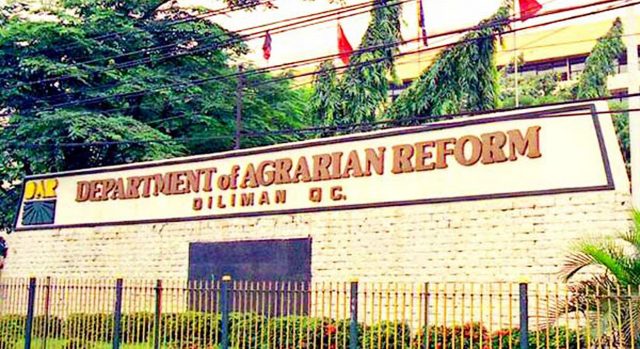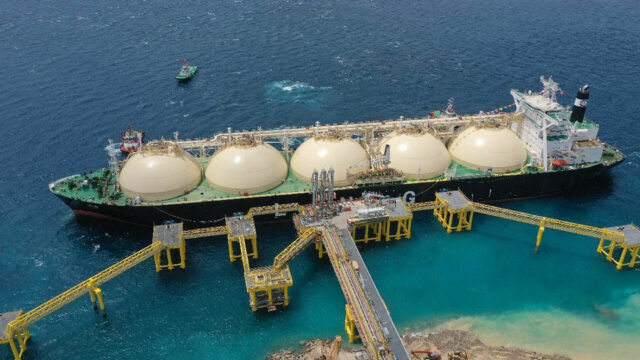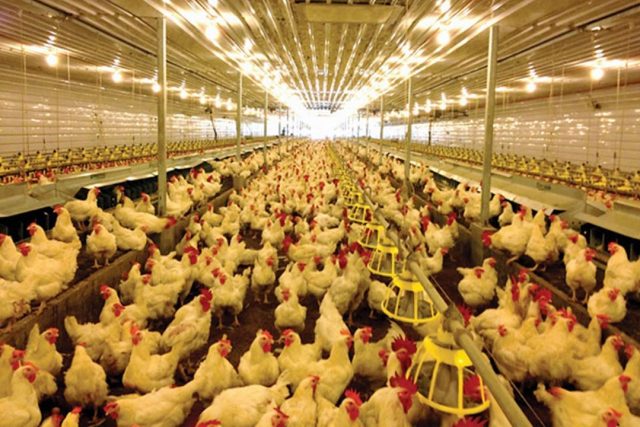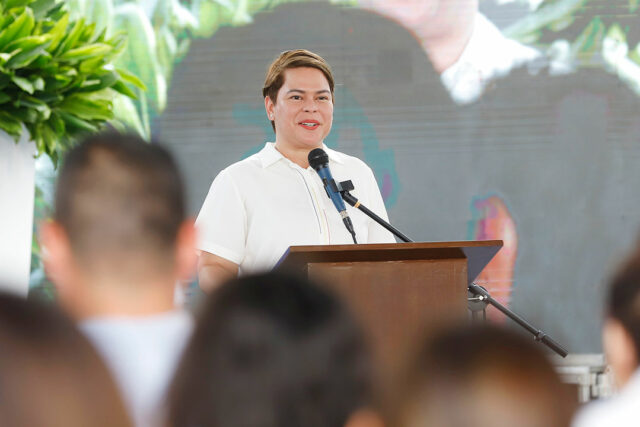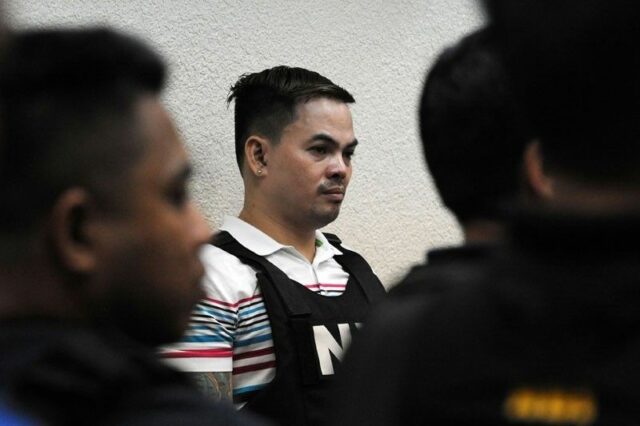By Kyle Aristophere T. Atienza, Reporter
NAVAL VESSELS from the Philippines and United States conducted a joint sail through areas of the South China Sea within the Southeast Asian nation’s exclusive economic zone, the Philippine military said on Monday.
It was the first time Manila and Washington carried out a joint sail in waters west of Palawan island, the Armed Forces of the Philippines’ Western Command said in a statement.
The display of cooperation between the US and Philippines comes at a time of heightened tension between the Philippines and China, which claims more than 80% of the South China Sea.
The Philippine Navy’s guided-missile frigate BRP Jose Rizal and the US Navy Arleigh Burke-class guided missile-destroyer USS Ralph Johnson participated in the joint sail, during which ships practiced maneuvering near other vessels.
“This event aims to provide an opportunity for the Philippine Navy and the US Indo-Pacific Navy to test and refine existing maritime doctrine,” the Western Command said.
The Philippines has repeatedly complained against what it described as China’s “aggressive” actions in the South China Sea, including the use of a water cannon by its coast guard against a Philippines vessel engaged in a resupply mission on Aug. 5.
China has built militarized, man-made islands in the South China Sea and its claim of historic sovereignty overlaps with the exclusive economic zones of the Philippines, Vietnam, Malaysia, Brunei and Indonesia.
The Philippines won an international arbitration award against China in 2016, after a tribunal said Beijing’s sweeping claim to sovereignty over most of the South China Sea had no legal basis.
Philippine President Ferdinand R. Marcos, Jr. vowed to promote an international rules-based order during the summit of Southeast Asian leaders in Indonesia this week.
“My participation will highlight our advocacies in promoting a rules-based international order, including in the South China Sea,” he said in a departure speech before flying to Jakarta.
The Philippines and other Southeast Asian nations have been seeking to finish a code of conduct in the South China Sea.
Meanwhile, the US bid to get closer to Vietnam amid an increasingly belligerent China bodes well for Philippine efforts to expand trade and security ties with allies, according to foreign policy experts.
US President Joseph R. Biden will visit Hanoi next week, a move that observers say is driven by shared concerns on China’s increasing aggression in the Indo-Pacific region, where 60% of global maritime trade passes through.
US efforts to boost relations with its former foe could create an enabling environment for Manila-Hanoi ties to improve, said Don Mclain Gill, who teaches foreign relations at De La Salle University in Manila.
“Closer Vietnam-US ties are also beneficial for the Philippines, given that both Southeast Asian countries are increasing their perceptual convergence towards the need to strengthen ties with Washington, thus creating more avenues for engagements,” he said in a Facebook Messenger chat.
As a middle power, the Philippines can draw lessons from Vietnam’s hedging strategy with China and the US “amid the latter’s increasing assertiveness and direct challenges towards Vietnam’s national interest,” he said.
The US and Vietnam “shared nothing but mistrust and antipathy toward one another” in the aftermath of the Vietnam war, according to the Journal of Indo-Pacific Affairs.
The former foes’ relationship has improved in the past three decades driven by business, with Vietnam now the US’ 10-largest trade partner.
As in the case of the Philippines, China is also Vietnam’s largest trade partner, with Hanoi heavily relying on Beijing for the materials and equipment needed by its manufacturing sector.
Vietnam has stood up to China’s aggression at sea. In 2014, the two countries quarreled after China moved its oil platform to waters near the disputed Paracel Islands.
Mr. Gill said Vietnamese foreign policy should be understood with utmost prudence, noting that strengthening ties between Hanoi and Washington does not mean that Vietnam would be willing to let go of its ties with China.
“Rather, it means that Vietnam is trying to address China’s growing belligerence.”
Philippine President Ferdinand R. Marcos, Jr. has vowed to make the country a “friend to all and enemy to none.”
‘SHARED CHALLENGES’
This is an important similarity between the Philippines and Vietnam, said Manila-based International Development and Security Cooperation founder Chester B. Cabalza, noting that the Southeast Asian nations are considered “middle powers.”
“Mapping out growing US-Vietnam ties is a good precedent for Manila to increase its bilateral ties with Vietnam,” he said in a Messenger chat.
Vietnam conducted major expansion activities such as dredging and landfill work at most of its South China Sea outposts in the second half of 2022, according to a December report by Washington’s Center for Strategic and International Studies.
Mr. Cabalza said Vietnam was the “last man standing” in the South China Sea conundrum when the Philippines pivoted to China under ex-President Rodrigo R. Duterte.
Vietnam’s stronghold at Paracel Islands and some maritime features in the Spratly Islands, over which the Philippines has claims, are “manifestations of Hanoi’s continuous resistance to China’s dominant presence in the contested waterways.”
He said Vietnam could share its military modernization experiences and maritime security operations with the Philippines.
“Vietnam has been adamant in negating China’s imaginative and illustrative maps,” Mr. Cabalza said. “It has banned a few movies that are critical to the U-shaped and broken-lines map of China. It has also gone to war with China to negotiate its maritime claims.”
He noted that the growing ties between the US and Vietnam, a growing manufacturing hub in the region, “hits the core of collective resistance against China’s expansionist regime while Beijing’s leadership morale is at rock bottom in the region.”
Vietnam is set to elevate its ties with the US to a “comprehensive strategic partnership” that it has only given to a handful of countries such as China, Russia, India and South Korea, according to reports.
Lucio B. Pitlo III, a research fellow at the Asia-Pacific Pathways to Progress Foundation, said upgrading US-Vietnam relations could improve security cooperation including on the maritime front.
He said Vietnam might warm up to more joint activities in the South China Sea, including US-led regional naval and coast guard drills.
“Washington may encourage and support other coastal states to work together to address shared challenges in the contested sea,” he said via Messenger chat.
He added that the US would likely provide them with diplomatic support and maritime capacity building to “expose Beijing’s gray zone actions and protest against its efforts to disrupt the marine economic activities of its Southeast Asian neighbors within their maritime entitlements defined by the United Nations Convention on the Law of the Sea.”
But Enrico Cau, chief advisor for geopolitical affairs at the Taiwan Business Leaders’ Forum, said the hedging strategy of Vietnam, which is unlikely to join any western-led bloc in case of conflict, “suggests that the Philippines’ best course of action revolves on its capability to engage Vietnam independently, rather than as a US ally.”
“This will allow Manila to make use of US influence as a multiplier to boost relationships with Hanoi, while retaining the capability to engage Vietnam autonomously, should the current momentum in US-Vietnam relations fail to consolidate in the long term,” he said via Messenger chat.
He noted that Vietnam’s hedging posture aims to achieve “maximum gains with minimal involvement in activities that put at stake its political stability and relations with neighboring countries.” — with Reuters


